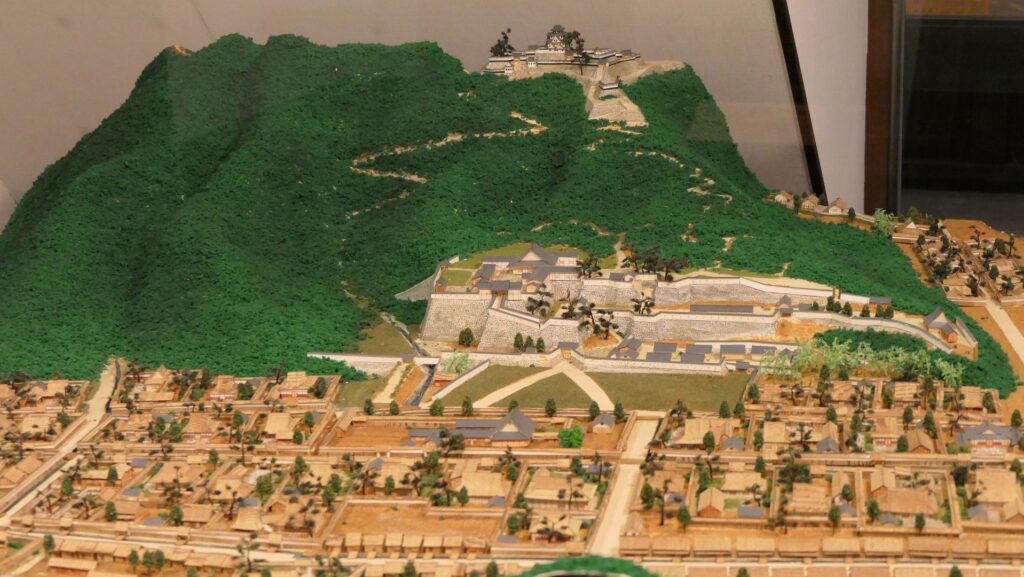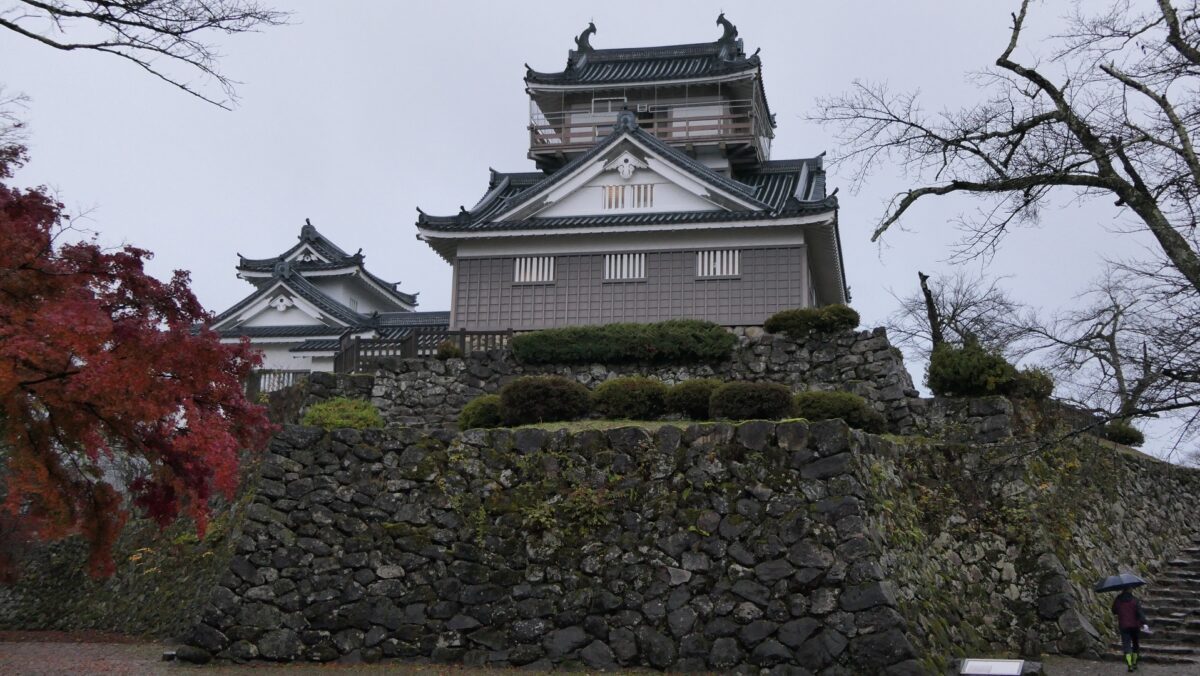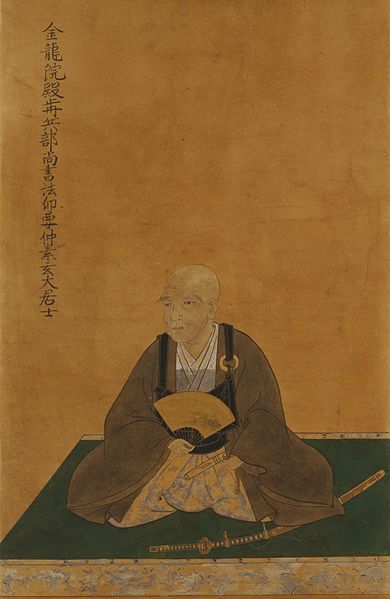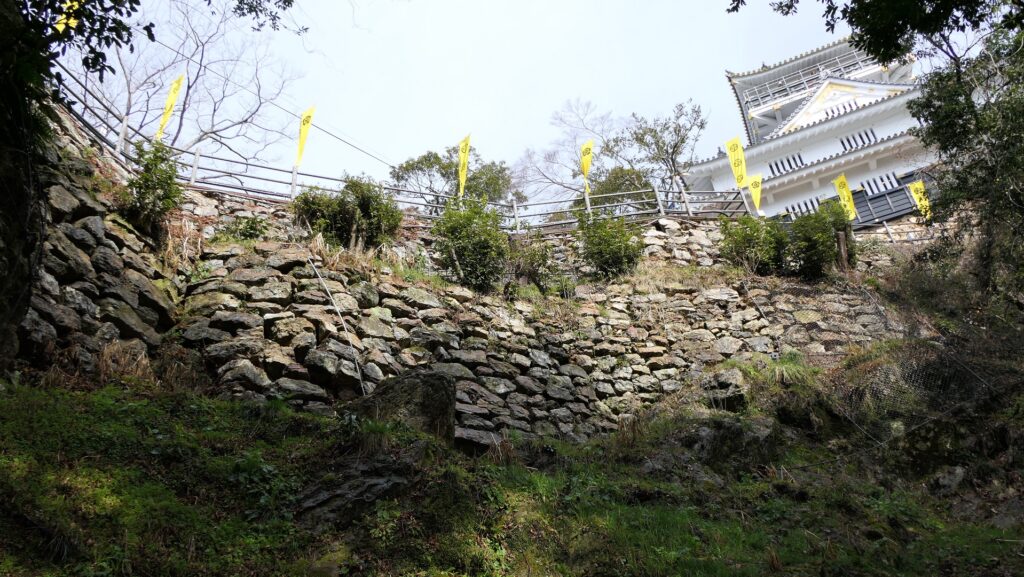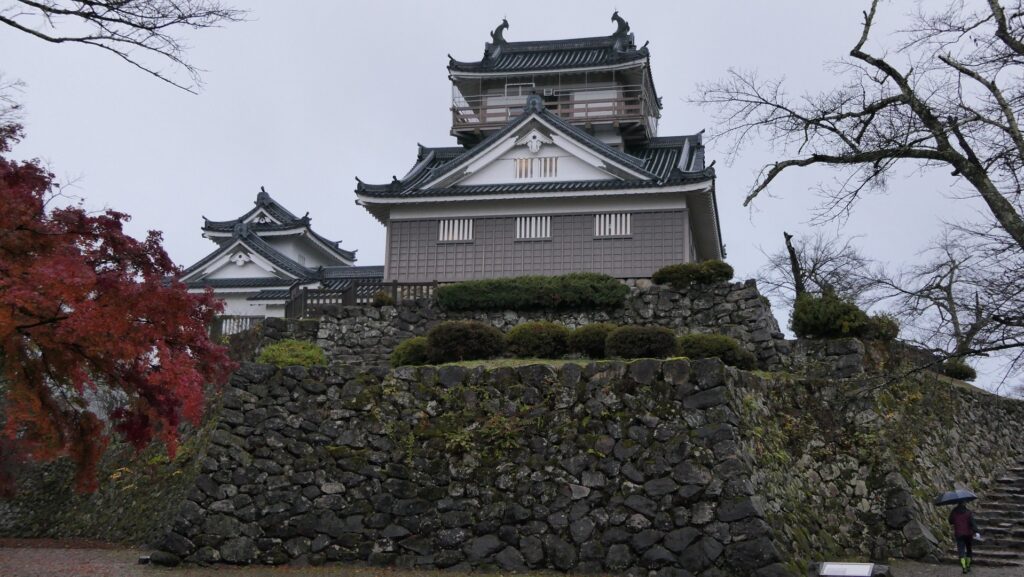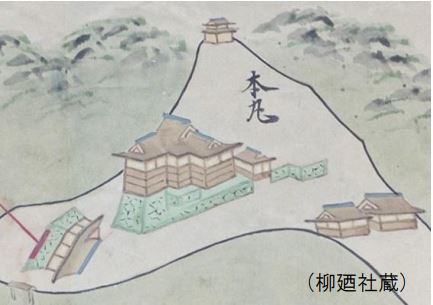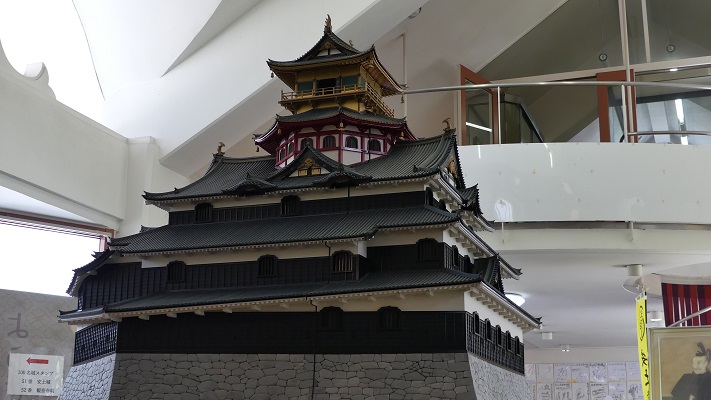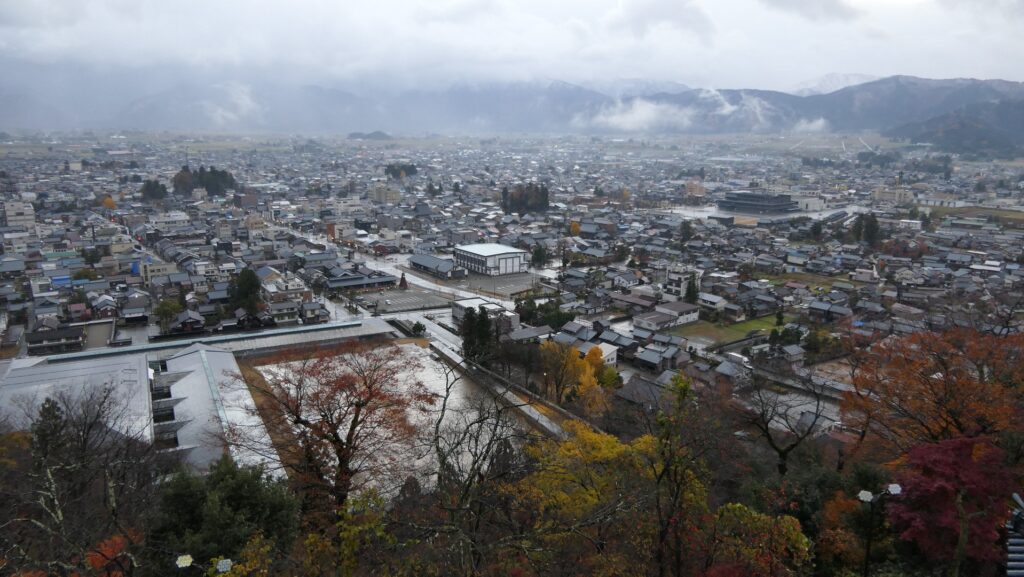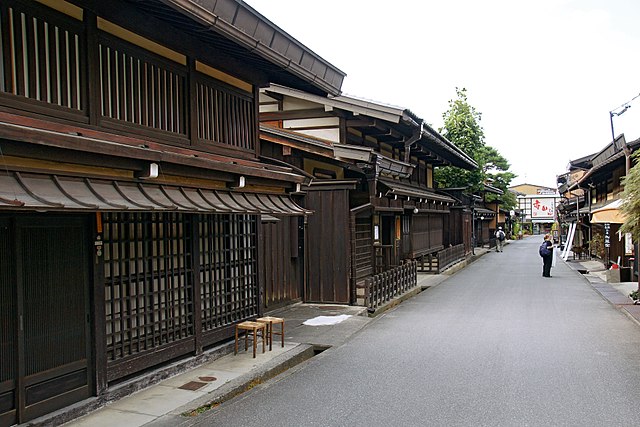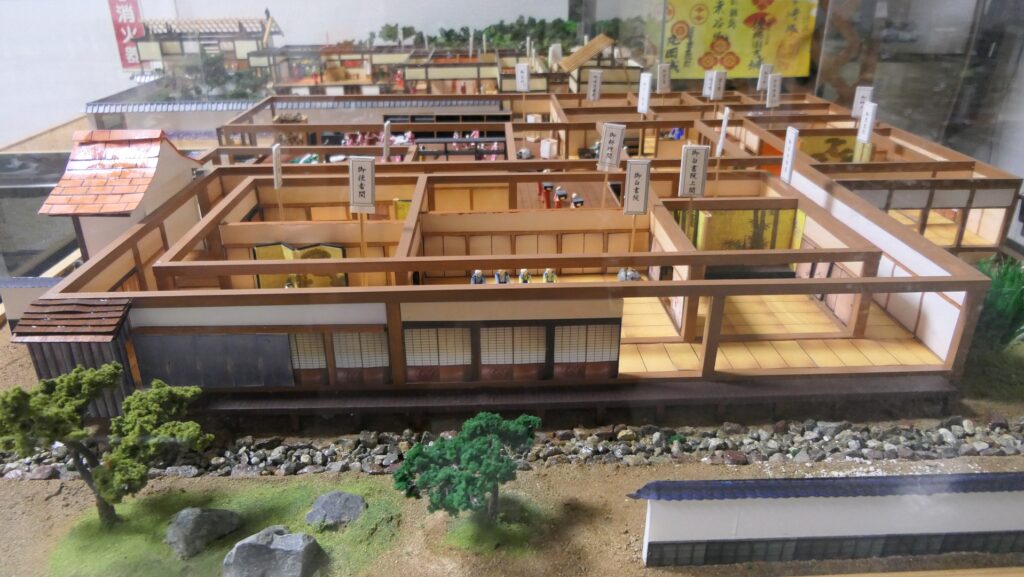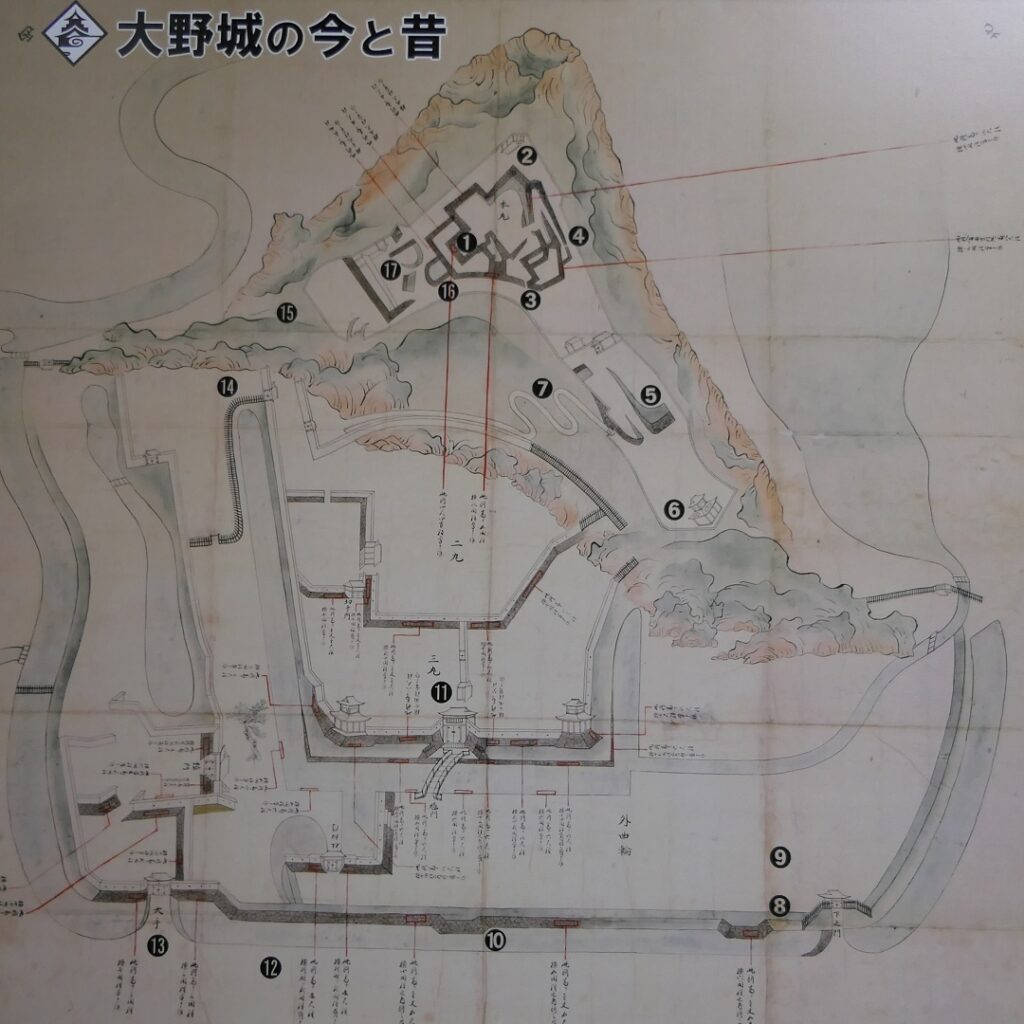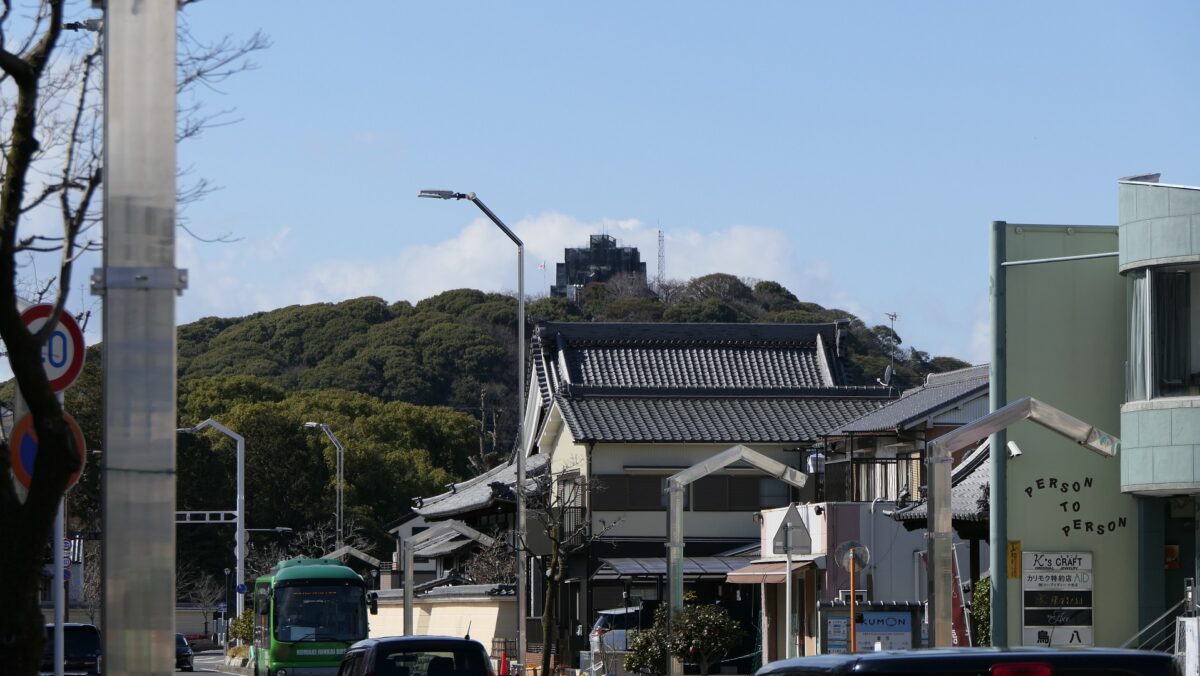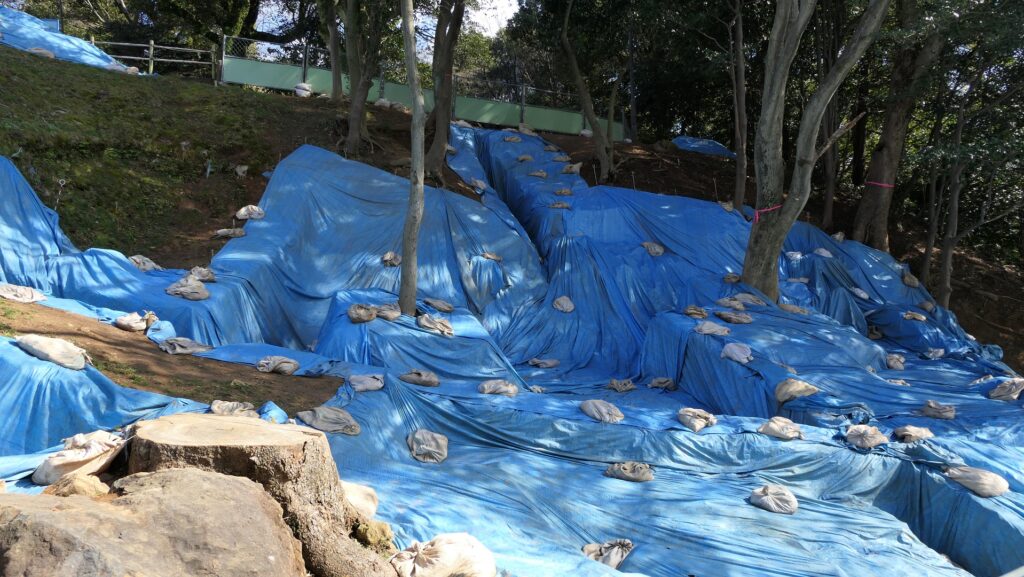Location and History
Endo Clan first builds it as Stronghold for battle
Gujo-Hachiman town is well known for its attractions such as an old street atmosphere, the beauties of nature, and the Gujo Odori Dance Festival in the summer. It was originally the castle town of Gujo-Hachiman Castle which was first built on Ushikubi-yama Mountain back in 1559. At that time during the Sengoku Period, almost all the people in Japan had to protect themselves and govern their communities all by themselves. In a small region called Gujo District in the northern mountain part of Mino Province, which is now the modern day Gujo City in Gifu Prefecture, the Endo and Tou Clans battled each other over the district. Eventually, the Endo Clan would win and their stronghold for the battle directly became Gujo-Hchiman Castle. The name “Hachiman” originates from a shrine’s name which the clan established at the foot of the mountain. The castle was said to be a simple mountain castle made of soil.
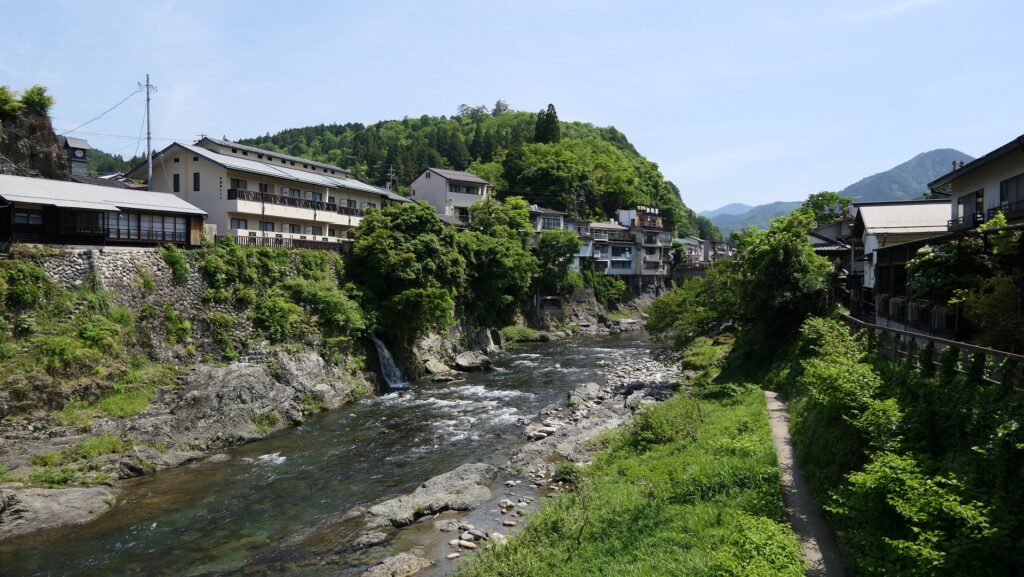
Yoshitaka Endo, the lord of the castle in the late 16th Century, had to work under other greater warlords in the Chubu Region, such as the Saito Clan and the Oda Clan. This was because lords of small regions did not power, therefore, needed to be guaranteed by great warlords in order to maintain their territories. On the other hand, they also needed to find out the next leader whom they would be working under. In the case of Yoshitaka, he supported Nobutaka Oda in Gifu Castle, who fought against Hideyoshi Toyotomi and was defeated in 1583. Unfortunately, he made a bad choice and surrendered to Hideyoshi. He was once overlooked, however he was eventually transferred from the lord of Gujo-Hachiman Castle to a much smaller territory by Hideyoshi in 1588.
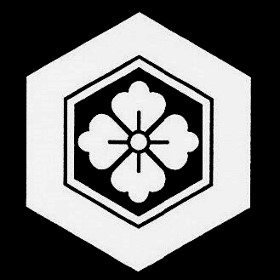
Inaba Clan’s Modernization and Endo Clan’s revenge
After that, Sadamichi Inaba became the lord of the Gujo-Hachiman Castle and started to renovate and modernize the castle by building stone walls around the Main Enclosure on the top of the mountain. The enclosure had the stone wall base for a Main Tower on it, but it was uncertain weather or not the Main Tower was built. It was also surrounded by the Belt Enclosures with tripled stone walls. Moreover, the back of the Main Enclosure which was the part connecting to other mountains was separated by doubled deep ditches. Gujo-Hachiman Castle became a strong castle protected not only by natural terrain but also by the advanced structures.

On the other hand, Yoshitaka Endo was waiting to recover. The chance to recover came in 1600 when the battle of Sekigahara would take place. He found out that Sadamichi Inaba supported the Western squad, therfore, he decided to join the Eastern squad led by Ieyasu Tokugawa. He began attacking Gujo-Hachiman Castle after Ieyasu’s approval in advance of Sekigahara. Both troops by Yoshitaka and Sadamichi fought a hard battle, especially in the back of the Main Enclosure. The castle survived most lilely because it got much stronger than Yoshitaka underestimated the strength of the castle. However, Yoshitaka eventually got the castle back in the end as the Eastern squad was victorious in the Battle of Sekigahara. Yoshitaka became the founder of the Gujo Domain under the Tokugawa Shogunate.

Gujo uprising before Government by Aoyama Clan
A big incident happened in the Gujo Domain, which was called the Gujo uprising, in 1758 when the Kanamori Clan governed following the Endo and Inoue Clans. Yorikane Kanamori was the lord of the domain and had an important role for the shogunate which cost a lot of money. Unfortunatelly, his domain was relatively small and had lower income than what he needed. Therefore, he decided to raise the tax rate by changing how to estimate the amount of harvested rice with the cooperation from some high class officers of the shogunate. This made farmers in the domain very angry, together in the rice warehouse at the foot of the mountain. They submitted a petition asking not to raise the tax. However, the domain refused this petition. So then the farmers brought this action in the lord in Edo, a member of shogun’s council of elders, and finally the shogun itself. This incident resulted in many farmers being executed, some shogunate officers were also displaced, and the Kanamori Clan were fired from the lord of the Gujo Domain.
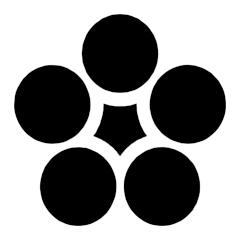

The Aoyama Clan followed the lord of the domain caring for farmers so that another incident would not happen. The clan also allowed people to dance in the town freely, which was said to be the origin of the Gujo Odori Dance Festival. As for the Gujo-Hachiman Castle, the clan moved the center of the castle from the top of the mountain to the Second Enclosure at the foot, where the Main Hall was. This was a typical way for the lords in the Edo Period to govern their domain in the peaceful time. As a result, the Second Enclosure was turned into the Main Enclosure. The former Main Enclosure was then divided into the Cherry Enclosure and the Pine Enclosure.


